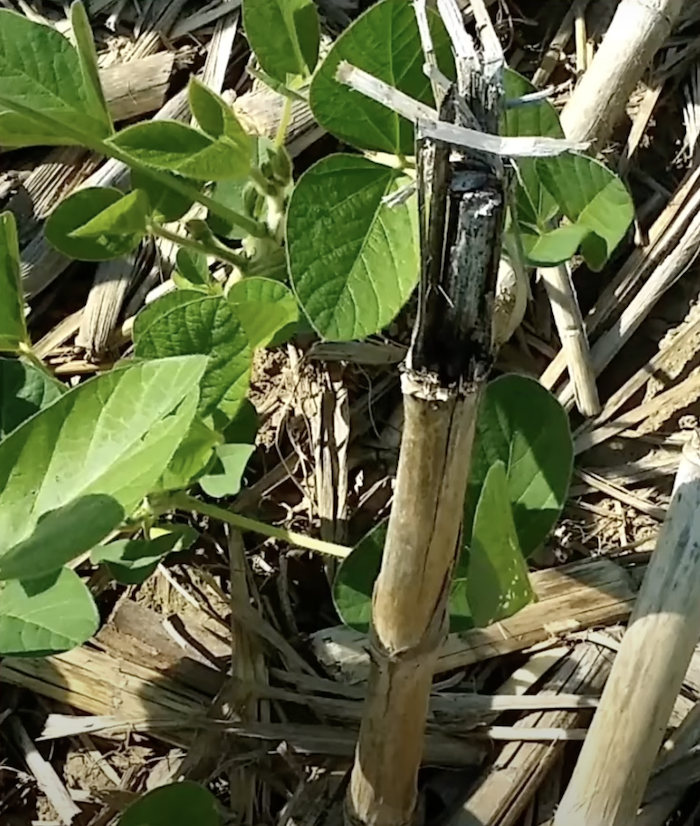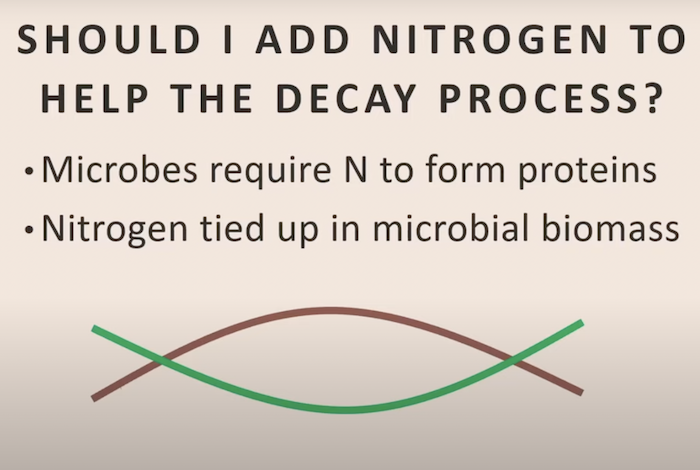Due to the high cost and limited availability of commercial fertilizers over the past few years, no-tillers have largely focused on recycling valuable nutrients from crop residue. However, there are several other benefits from accelerating your residue decay program, including faster soil organic matter formation, fewer problems with planting and emergence, and improved weed and disease control, according to Doug Miller, Midwest Bio-Tech vice president and agronomist. During a No-Till Farmer webinar, Miller provided answers to some of the most commonly asked questions about the residue decay process.
Is soil contact required to initiate residue decay?/Should I shred stalks or use vertical tillage?
Miller: Soil contact is not required. The decay microbes are going to enter stalks wherever they find openings to feed on the pith (cellulose). The corn stalk in the picture below has the most decay because it was first colonized at the top of the stalk, where the organisms entered.

You don’t need tillage to decay residue. The organisms are going to find the easiest way for a meal even if it’s well off the soil service. It helps to break the stalks in some way. The more openings the organisms have, the more colonies they’re going to be able to form and you’re going to break down those stalks in multiple places. The decision to shred stalks or use vertical tillage is up to you. You have to look at diesel fuel costs and available time. If you do that, you can help with residue decay by breaking those stalks and providing room for colonies to form.
Isn’t undecayed residue like a savings account?
There are a lot of advantages to removing excess residue. Because of high fertilizer prices, a lot of people want to recycle those nutrients and get them back in production. Excess residue ties up valuable nutrients, hampers planting and emergence, slows the warming and drying of the soil before planting, and hosts insects and disease.
Should I add nitrogen to help the decay process?
It depends. The microbes do require nitrogen for their cell structure. While that decay process is underway, you’re going to tie up nitrogen in that microbial biomass. In the diagram below, the brown portion represents the decay activity, which is going to decrease the available nitrogen in the field (represented by the green portion of the diagram). At peak decay, you’re going to have the least amount of nitrogen available because it’s tied up in that microbial biomass, and it won’t be available for growing the crop.

Add nitrogen if:
- Leached N during the season because of excess rain
- Starting fall rye or other grass cover crop
WATCH: Midwest Bio-Tech's Doug Miller answers FAQ about residue decay
How does decay activity reduce weed pressure?
You can decay weed seeds. They’re crop residue just like stalks, cobs and leaves. Over time it's possible to reduce weed pressure through an active decay program. The role of residue decay in affecting the weed seed bank is not terribly well understood, to be quite honest.
People have found that you can decompose 20-80% of a weed seed bank for some seeds over 2 years. It doesn’t happen right away, but you can use biological decay to help eat into the seed bank. Species that decompose more are palmer and pigweed — they have relatively thin seeds which are easy to break down. You can also decompose Velvetleaf and native grasses that have harder seed coats, but at a lower rate. Decay rates depend on how tough those seeds are. It takes time, you won’t get perfect control, but you will get some reasonable control by encouraging microbial decay of your seed bank.
Based on different tillage practices, soils that are more biologically active tend to have higher decay rates. Anything you can do to promote biological activity in the soil is also going to promote those decay organisms that have a better chance of eating into weed seed banks. We’ve noticed that happen on our own farm. It’s hard to measure, but people notice it.
Can residue decay activity harm new crop seedings?
Our experience is that’s not a problem. We haven’t seen any cases where we felt that was an issue. The agronomists point out that one difference between weed seeds and crop seeds is crop seeds have more limited dormancy. Crop seeds have been selected for certain genetic attributes, including ease of germination and early seedling vigor. As a result, the seeds that we’re now planting are going to have a fairly limited dormancy that’s easy to break. Evidence shows that seeds typically germinate faster than they decay. The only real risk of decay is if the weather conditions change, and the seeds go back into secondary dormancy — that’s when the decay can happen. If you have dry and cold conditions that aren’t going to help germination, you’re also going to have slower decay.







Post a comment
Report Abusive Comment